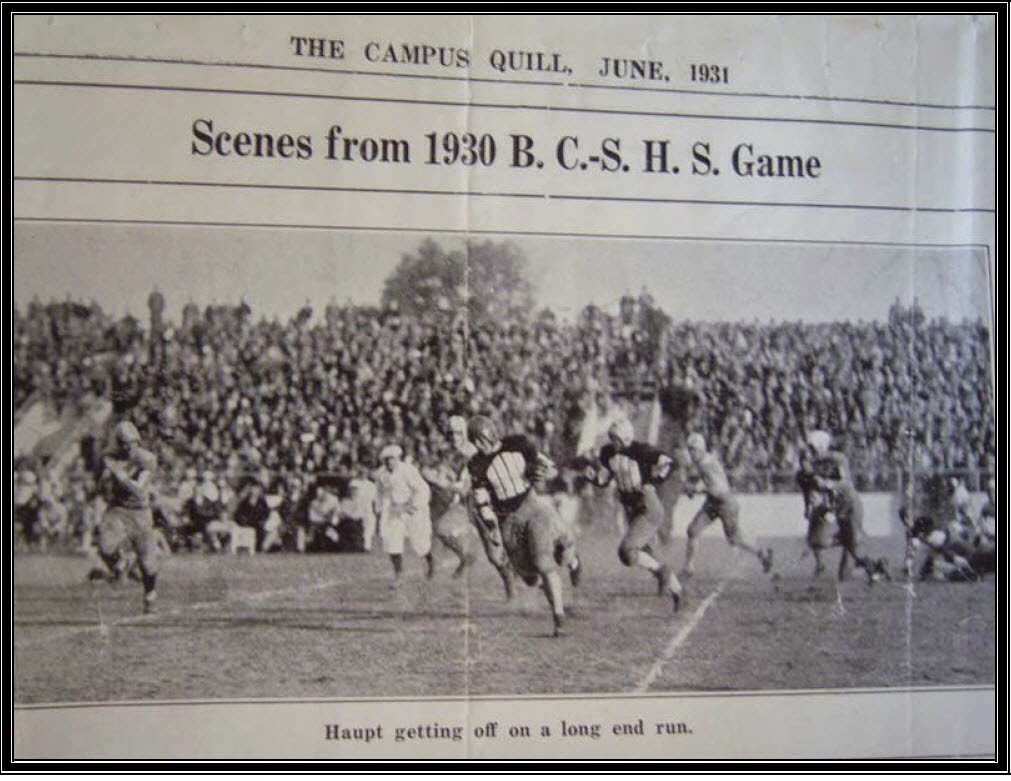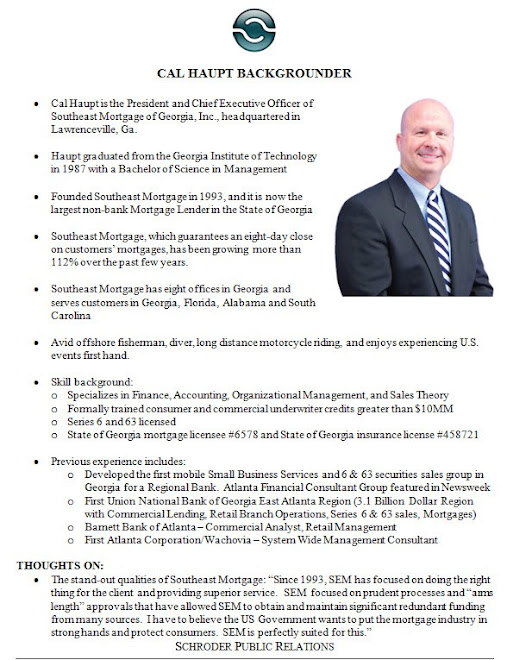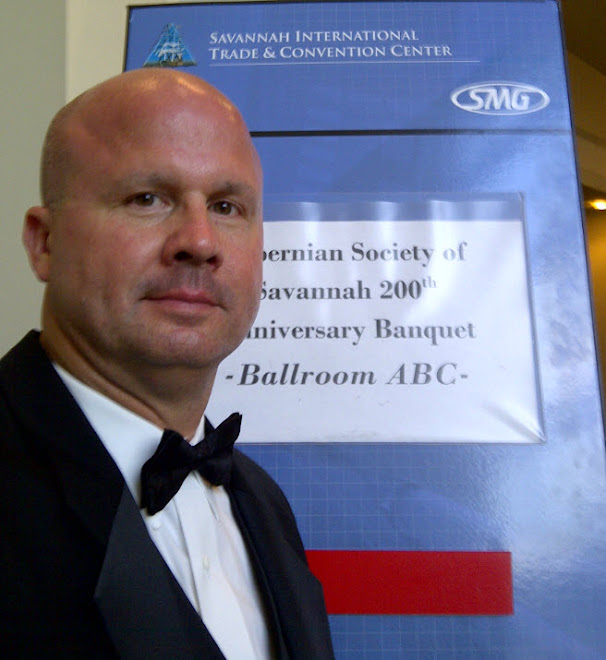HAUPT FAMILY HISTORY - A BRIEF ESSAY OF 930 YEARS
Posted by:
Ray HauptA brief essay covering 930 years by Ray Haupt July 25, 2009 Surnames were first used by members of the middle nobility about 1000 years ago. The earliest record of the Haupt surname comes from an ancient document describing an incident that occured on Feb. 12, 1111. The incident was recorded by Bishop Otto von Freising who was an early chronicler for the Holy Roman Empire. This incident involves the following. German King Heinrich V had invaded Italy in 1110. By February of 1111, Rome was under the German King's control. King Heinrich V was demanding that Pope Paschal II crown him Holy Roman Emperor. The King's father, Holy Roman Emperor Heinrich IV, had died five years earlier and Heinrich V had waited long enough. The Pope was at odds with Heinrich V and his father Heinrich IV over the issue of investitures. The Pope was not going to crown Heinrich V as Holy Roman Emperor. The investiture debate involved the issue of whether the King or Emperor can have lay persons appointed or elected to positions in the clergy or should the Pope continue to control these matters. On February 12, 1111, the situation became rather heated. While inside the old St. Peter's Basilica in Rome and in the presence of Pope Paschal II, Heinrich Haupt, a high ranking soldier/knight, approached First Bishop Conrad of Salzburg with sword drawn. King Heinrich quickly shouted out, "No Heinrich, it is not yet time!" The Papal guards quickly reacted to this and then the German forces responded and regained control. King Heinrich and his forces would leave Rome with Pope Paschal II and 16 Cardinals as hostages. A couple of months later, Pope Paschal II crowned King Heinrich V as the new Holy Roman Emperor. When word of these events spread throughout the countryside, turmoil erupted that would last for decades. In 1115, the insurgency led by Lothair III of Supplingen would defeat the forces of Holy Roman Emperor Heinrich V and later in 1125, Heinrich V had died. Lothair III would be crowned Holy Roman Emperor in 1133 by Pope Innocent. This would be a break from the hereditary blood line. This blood line had extended from the reign of Charlemagne (768-814) and the Carolingian Dynasty through to the Salian Dynasty (or Franconian Dynasty). In 1137, Lothair III died while he was crossing the Alps. He was returning from a military campaign in Italy. Their were no male heirs. In 1138, the blood line would be restored with the crowning of Conrad III as Holy Roman Emperor. Conrad III was the first King and Emperor of the Hohenstaufen Dynasty. Conrad III's mother Agnes was the daughter of Emperor Heinrich V. In 1113, when Heinrich V was still Holy Roman Emperor, Heinrich Haupt was promoted to the post of Burggraf of Meissen (Count of the Castle) at the fortress in Meissen, Saxony. It seems as if Heinrich Haupt was being rewarded for his loyalty to Emperor Heinrich V. Heinrich Haupt, Burggraf von Meissen was taken prisoner on Feb. 11, 1115 during the Schlacht am Welfesholz (Battle of Welfesholz). During the course of this battle which lasted for a few days, there was a dual between Count Hoyer I von Mansfield, Field Commander (loyal to Emperor Heinrich V) and Count Wiprecht III von Groitsch (loyal to the opposition under Lothair III). Count Wiprecht III won the dual by killing Count Hoyer and immediately took Heinrich Haupt (loyal to Heinrich V) as a prisoner. Later that year, after Lothair III's victory over the forces of Emperor Heinrich V, Wiprecht II (the father of Wiprecht III), who had been imprisoned since 1113 in Trifels, was set free along with the exchange / release of Imperial Ministerial Heinrich Haupt, Burggraf von Meissen. By the 1120's, Heinrich Haupt had the title Heinricus Marscalcus (Marschall in German means General in English). This Heinrich Haupt appears to have been born about 1080. _ The next time Haupt appears in the records was in 1130 when Heinrich Haupt was the founder and first Lord of Pappenheim. This appears to be a son of the previous Heinrich Haupt although it is entirely possible for it to be the same individual. Pappenheim was to become a fortified location in the very SE corner of Middle Franconia located just north of the Danube River. A walled castle/fortress (Burg) was soon started in Pappenheim on a horseshoe curve of the Altmuhl River. The Lordship of Pappenheim (a hereditary line) supervised the training and development of Knights. These early Knights of Pappenheim would be sent off to fight in the Crusades. The Haupt name was accepted as the family name by the Lords of Pappenheim. Germans were fond of having multiple names. Their official name would simply be their first name along with their title. For example, Heinrich, Marschall zu Pappenheim. The Haupt name would be hidden as one of their middle names and on occasion would be the first name as we see with Lords Haupt I and Haupt II of Pappenheim. By the 1330's. the Holy Roman Emperor was Ludwig the Bavarian. At the time, the Duchy of Bavaria shared a border with the "statelet" of Pappenheim. The Lords of Pappenheim were obviously in good standing with the new Emperor. In 1334, they were granted the title of Hereditary Generals of the German Nation within the Holy Roman Empire. They were given this title as a result of having a hereditary line established; providing well skilled military officers; and providing evidence through their family's Ahnentafel (family tree) of the hereditary line extending back to the incident in 1111 and their very early support of the Imperial blood line of the Salian Dynasty which dated back to Charlemagne (764-814). The Lords of Pappenheim would now have the title Erbreichsmarschalle zu Pappenheim or Hereditary Imperial Generals of Pappenheim. For the next few hundred years, the Haupts of Pappenheim would be in the center of all that was happening in European history. From the protests of Jan Hus (early 1400's) to the Reformation Movement and Martin Luther (early 1500's) to the Thirty-Years War of the early to mid 1600's, the Haupts of Pappenheim played key roles. The Haupts of Pappenheim had a royal seat at all the coronations of the Holy Roman Emperors and participated in the imperial processions for those coronations. The Haupts of Pappenheim would be there during the rise of the Hohenzollern Dynasty which would later control the Kingdom of Prussia (1701-1918). In fact, Ansbach (near Pappenheim) was the home base for the Hohenzollerns before they acquired the Brandenburg tract of land. In 1628, the Lordship of Pappenheim became a County, headed by a Count. The German word for Count is Graf. So the Counts of Pappenheim were known as Graf zu Pappenheim. The daughters were born with the title of Prinzessin (Princess) and the sons born with the title of Graf. Because this was a hereditary line, only the eldest son would become the top official in Pappenheim. All the younger sons would be referred to as the "cadet" lines. Over the hundreds of years, these cadet lines spread throughout the German speaking lands. They would have different roles to perform. Some would be military officers; others would be ministerial officials governing to the population; while others would be jurors, members of the clergy, and educators. As these younger siblings migrated away from Pappenheim, they would drop any title and simply use the family name of Haupt as their last name. During the 1700's, 1800's, and 1900's, several Haupt families would migrate to the United States, Australia, South Africa as well as other countries around the globe. Some of the Haupt families in the United States arrived before the Revolutionary War while some arrived as Hessian Troops and remained in the US after the war. Many Haupts left Europe during the rise of the Prussian Empire to both the USA, Canada and Australia. Haupts were involved in the colonization and development of South Africa. Much earlier (late 1200's and 1300's), Haupt families from German speaking lands would be part of re-settlement efforts in counties such as the Czech Republic, Hungary, and Romania. _ There are an estimated 100,000 persons (worldwide) living today that have descended from Heinrich Haupt of Pappenheim from approximately 1.07 billion total descendants. Approximately 50% of that 100,000 carry the Haupt name (or one of it's many derivations). This is a conservative number. It assumes that each descendant would have just two offspring. When in reality, families had several children. This was calculated using the formula 2 to the 30th power. A 30 year time period was used for one generation (in 900 years there are 30 generations). 2 x 2 x 2 etc. for 30 times = 1.07 billion. Assuming only the most recent two generations are currently alive, that would still be 805 million possible descendants alive today. But of course there were many wars, periods of disease, and times of famine - so, not all survived. Just a couple of examples: 40% to 50% of the population of the German speaking lands was lost during the plague of 1348-1350. 40% of the population of German speaking lands was lost during the Thirty-Years War of 1618 - 1648 dropping from 22 million to 13 million. The spelling of the Haupt surname has undergone much derivation in Germany, in other countries of Western Europe, and in the United States. Some examples are: Houpt, Houpe, Houpe, (some) Hope, Haub, Haubt, Hawpe, Haup, Hobt, Hoppt, Hout, Haupts, and Hape. There are likely others. A few additional notes regarding Pappenheim... Pappenheim and the surrounding Ansbach territory and Middle Franconia was Roman Catholic prior to 1530. After 1530, the entire Ansbach territory (including Pappenheim) was under the influence of the Protestant branch of the Hohenzollern family. The Catholic branch of the Hohenzollerns now controlled the Brandenburg land tract. It appears Pappenheim remained Protestant until the area was annexed by the Kingdom of Bavaria in 1806 after Napoleon abolished the Holy Roman Empire. In the mid 1300's, the Lords of Pappenheim were given the authority by Holy Roman Emperor Ludwig the Bavarian to be a protectorate of the Jewish families that resided within the Lordship. When Jewish families began to use surnames, some of those living in Pappenheim decided to use Pappenheim as their family's surname. There are a few cases, where the more recent cadet lines of the Counts of Pappenheim have also decided to use Pappenheim as the surname instead of Haupt. The Haupt name however, is still one of their middle names (males only). These would be Catholic Pappenheim families. Some of the cadet lines that left Pappenheim before 1530 converted from Catholic to Protestant depending on where they were living at the time of the Reformation. For example, the Rheinland was predominantly Protestant after 1530. Some, after conversion to being Protestant, converted back to being Catholic as we see in the case of Thirty-Years War hero Field General/Calvary Commander, Gottfried Heinrich, Graf zu Pappenheim who perished in the Battle of Lutzon (1632) while serving with the (Bavarian) Catholic League.
History of Savannah
http://www.archive.org/stream/cu31924028792491/cu31924028792491_djvu.txtChatham Co., GA
John Haupt (b. 1754 d. 1794) with wife Elizabeth (Bollinger) Haupt and their young family settled in Savannah, Chatham Co., GA about 1783. John Haupt had been serving along with other German soldiers in the 3rd and 4th Battalions of the British 60th Regiment stationed in St. Augustine, FL. These Battalions had arrived in St. Augustine on Mar. 26, 1777. John Haupt's wife was from Savannah. John Haupt was born in Wolfhagen, Hessen. Two of John and Elizabeth's children were born in St. Augustine. When the British forces pulled out of St. Augustine, John Haupt and family would relocate to Savannah.















































































No comments:
Post a Comment